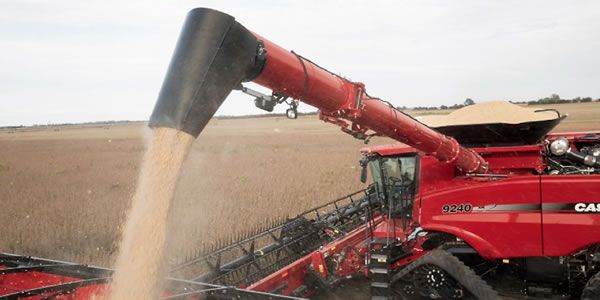With all the planning, planting, spraying and marketing that goes into a growing season, its not uncommon for something to be overlooked come harvest time.
Contributed by | Decisive Farming
Reprinted with permission from the Decisive Farming blog:
Harvest time is a hectic time for growers. While it can hold the promise of a bountiful yield, it is also means juggling any number of tasks, from making sure you have enough boots on the ground to ensuring your equipment is working and in the field.
With all the planning, planting, spraying and marketing that goes into a growing season, it’s not uncommon for something to be overlooked come harvest time. That’s why it’s important to ensure the monitor in your combine are properly calibrated and fields are set up before you and your team head out into the field to harvest. Here’s your checklist for harvest success.
Calibrate for each crop
While no one wants to spend a lot of time mucking around with a monitor or making sure an in-cart scale is working properly, calibrating the monitor for each crop is essential before you start. Becoming more familiar with how to set up your equipment may require a little more up-front work, but it will pay off in the long run by helping you capture more accurate yield data which can then help you to better evaluate the performance of your agronomic program.
“Yield maps are only as useful as they are accurate,” says Michael Lockerbie, president of Bitstrata Systems, a Saskatoon-based company that produces the Agrimatics’ Libra Cart mobile device based grain cart weighing and data management system. “A significant problem that growers encounter relates to yield map calibration. While the relative highs and low of a map point to production efficiencies, improper equipment calibration can lead to map inaccuracies.”
The experts say calibrating your yield monitor doesn’t have to be a time-consuming procedure. Once you have the steps down, it often takes 10 minutes or less per machine to complete the process and ultimately can be just as important as checking the feeder and elevator chains in your combine. Your equipment dealer and precision ag service provider are the best resources to help make sure everything is set up correctly.
Also remember to set your monitor by selecting the right field for recording. Repeat this step and create a new job for each field. Doing these steps will help ensure your yield analysis is the most accurate.
Having more data means better insights
“Even if you are not using yield data today, why not collect it? It’s valuable information,” says Dustin Downey, an ag optimization and technology specialist with Rocky Mountain Equipment. “The more years of data you have on a particular field the more useful it is.”
The value of accurate data cultivated over several seasons cannot be overstated. Accurately captured data provides a snapshot of the areas in your fields that produced the best and those that under-performed. Tracking this data over several seasons can really help the farm refine and optimize its agronomic programs and get the most from those fields.
Let your data flow
OK, so now that you have all this data, what do you do with it? It’s not doing much good if it remains stored in your monitor. Downloading the data itself isn’t difficult, but the raw data files will need processing into visual insights.
That’s where a software system like My Farm Manager™ comes into play. My Farm Manager allows you to use telematics or a USB drive to upload your yield data which is then processed into a comprehensive yield analysis report. This report is included with all data management packages from Decisive Farming.
To use combine telematics such as AFS Connect (Case IH), JD Link (John Deere), and PLM Connect (New Holland) make sure the AFS, MyJohnDeere, and PLM Web accounts are connected to My Farm Manager to allow seamless data transfer. Having those connected makes pulling the data into My Farm Manager a snap.
We hope you can make use of these tips, and gain some peace of mind that the data is taken care of. And remember that by compiling better yield data, you will be better equipped to connect the dots between yield, input costs and revenue. This will allow you to better know your return on investment and guide future decisions on the farm.
The content & opinions in this article are the author’s and do not necessarily represent the views of AgriTechTomorrow
Comments (0)
This post does not have any comments. Be the first to leave a comment below.
Featured Product


